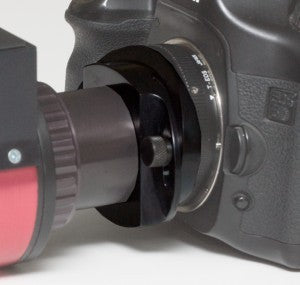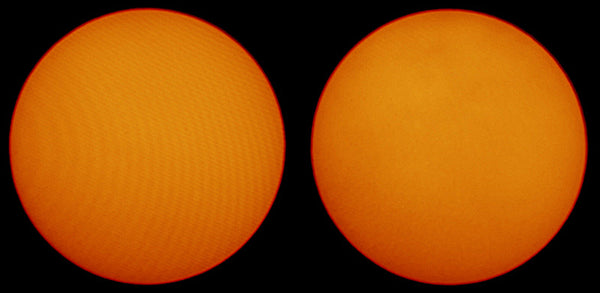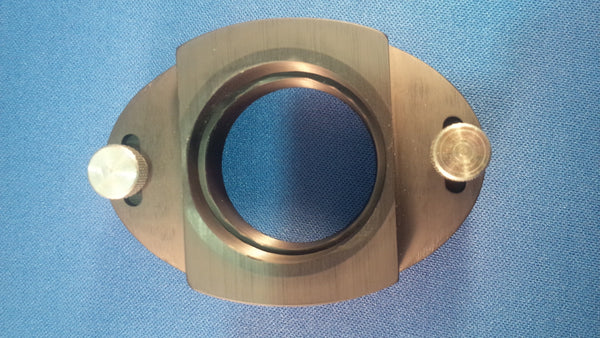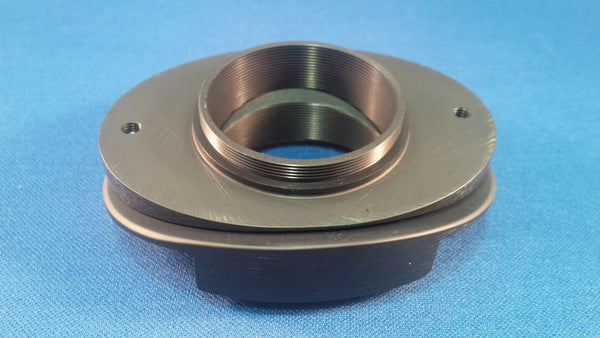DayStar Interference Eliminator (T/C Mount)










DayStar Interference Eliminator (T/C Mount)
Style - T Mount
Why Purchase from All-Star Telescope?
Free Expert Support
Whether you are a first timer needing help with setting up or an enthusiast that can't quite make that one thing work, our expert staff are ready to support your needs. With decades of knowledge and first hand experience we've been there and we can help you through it!
Stress Free, Secure Transactions
You can trust purchasing and delivery with All-Star Telescope. All of our transactions are 100% secure and Level 1 PCI DSS compliant thanks to Shopify's ShopPay platform. For additional protection, we insure 100% of the value of every shipment we make. If it get's lost during shipment, we replace it. If it gets damaged during shipment, we replace it. We make sure your product arrives exactly as you would expect it to; we promise.
We also ensure privacy protection. We never keep any of your credit card information on file and any of your personal data is stored according to our policies.
30 Day Return Policy
Buy with confidence knowing that we accept returns up to 30 days after purchase. We want you to have something you will actually use and we are confident that we keep good quality products in our store with No Junk.
Price Match Promise
Shipping around for the best price is tough, we make it easier by offering the best pricing in the market. But if you find a better price on an in-store item somewhere else we will match it!
Product Description
Photographers imaging in monochromatic light, such as Hydrogen Alpha, using an electronic sensor frequently encounter a wavy pattern of light and dark lines superimposed over their images. These lines are called interference fringes, interference patterns, or Newton's Rings. In long focal ratio applications, the nearly parallel light can internally reflect inside the image sensor or camera, causing an addition or subtraction of the light waves, resulting in the observed pattern.
The Interference Eliminator solves this problem by tilting the camera off normal while keeping the center of the image sensor stationary, so that focus, framing, and vignetting are not changed with the tilt. The tilt changes the angle of incidence and optical path lengths inside the image sensor, mitigating the interference.

Left: normal, problematic image. Right: With Interference Eliminator.
Telescope/filter: DayStar SolaREDi, tuned off band. Camera: Canon EOS 5D.
Installation & Use
Installation: The Interference Eliminator should be placed directly in front of the camera in the optical train. For proper operation, the distance from the flange of the male T thread to the camera focal plane should be 55mm. On a DSLR with a T ring, no spacers are required, the T ring sets the distance to 55mm. On a CCD camera or Webcam, male to female T ring spacers may be required to bring the distance to 55mm. If the distance is significantly different from 55mm, the camera will move off boresight and the focus position will shift while adjusting the Interference Eliminator tilt setting.
Use: Slightly loosen the thumbscrews and slide the two halves of the Interference Eliminator apart, such that the camera tilts. Take a few images with the camera to check for the interference pattern. Slide further apart if the pattern is still evident. Tilt it the minimum amount to eliminate fringes - too far and focus could be lost at the top and bottom of the image, especially in fast focal ratio systems. If maximum tilt is reached without satisfactory effect, try full tilt in the opposite direction. In some severe instances the interference pattern may not be completely removable, but it will be reduced to where other techniques such as flatfielding or compositing can make the image acceptable.
Notes: On large sensors such as full frame 36x24mm DSLR cameras, some vignetting is possible at full tilt due to the camera structure and the inside diameter of the T thread. For an example of a full frame Canon EOS 5D image at full tilt, click here. With webcams or 1.5-1.6x crop digital SLRs no vignetting will occur.
Specifications
- Camera compatibility: Digital cameras such as Canon, Nikon, and or DSLR cameras; Lumenera, Imaging Source, Philips, SBIG and many more CCD cameras.
- Telescope/filter compatibility: Recommended for long focal ratios (F/30) such as DayStar Filters.
- Thread: Male/Female 'T' thread, M42x0.75.
- Dimensions: 60x83mm ellipse, 22mm thick.
- Additional back focus required: 15mm.
- Radius of curvature: 65mm.
- Recommended distance to focal plane: 55mm from male T flange. (Exact for Canon/Nikon DSLR cameras with standard T ring).
- Range of motion: +/- 5 degrees.
- Weight: 0.1kg (0.2 lb) CNC machined aluminum.
- Maximum camera weight: 3.5kg (7.7lb)

